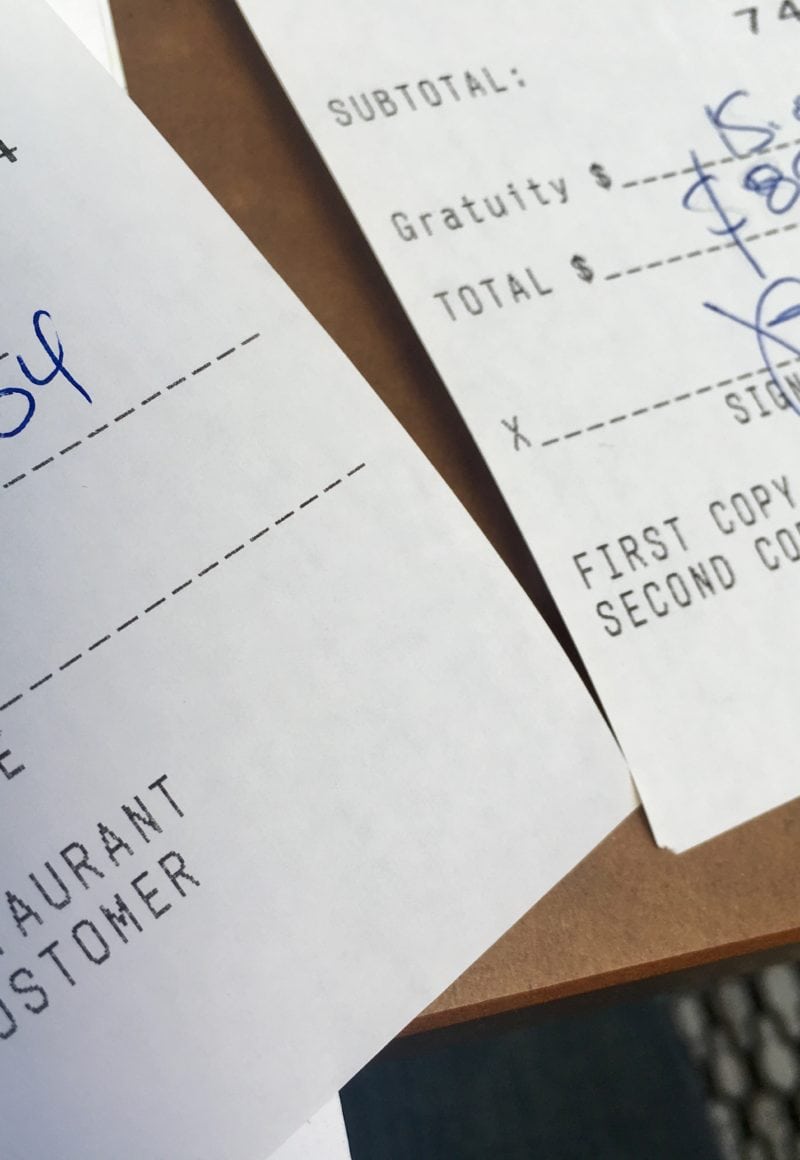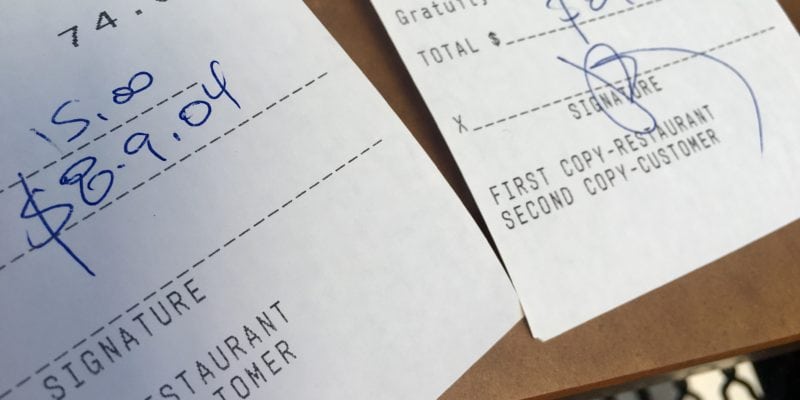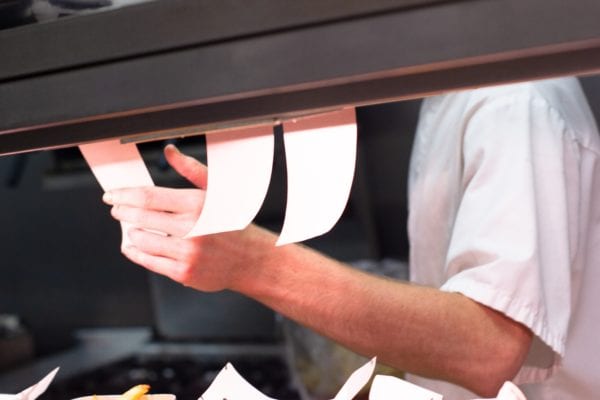Skift Take
Multiple states are debating whether to eliminate the tipped minimum wage this year. The issue is confusing and contentious, and there are good arguments being made on both sides. Here, we look at how much money the tip credit is worth in New York, and why restaurateurs are so afraid to lose it.
— Erika Adams
You may have seen a headline or two lately about the heated tipped minimum wage debate, also known as the tip credit. While the issue has been in and out of the headlines for years, a decision on whether to eliminate the tip credit is expected soon from New York governor Andrew Cuomo.
Last month, Washington, D.C. residents voted to eliminate the tipped minimum wage, and last week New York held its last public hearing on whether or not to eliminate it. Both Massachusetts and Michigan are currently mulling legislation on the matter. Seven U.S. states already operate without the tip credit. Maine tried to remove its own tip credit in late 2016 but the elimination was repealed less than a year later due to intense outcry from both staff and owners in the industry.
New York is a powerhouse contributor to the national restaurant industry, which makes it a good barometer for judging the effects of a possible tip credit elimination. According to statistics from the National Restaurant Association, there are approximately 44,910 eating and drinking establishments in New York as of 2016. State-wide, the industry generated $43.3 billion in sales in 2017. Compared to other states, only California and Texas have more restaurants and generate more sales.
Ok, So What Is the Tip Credit?
It’s called a “credit” but there’s no actual dollars being exchanged. The tip credit is a wage break given to businesses that employ tipped workers in some states. This means that restaurant operators do not have to pay their tipped staff the full, state-mandated minimum wage. Instead, the restaurants can utilize the tipped minimum wage, a lesser hourly rate for workers who also receive a portion of their income in tips.
Any employer who uses the tip credit must supplement each tipped worker’s wages if the tips do not fully cover the gap between the tipped minimum wage and the regular minimum wage during each pay period. If it’s a slow week and waitstaff isn’t making the general minimum hourly wage, the operator is legally responsible for compensating the employee in order to fill that gap — every time.
If it sounds confusing, it’s not just you. People who work within the restaurant industry aren’t always familiar with the legislation around the tip credit. Ron Mathews, New York City’s regional director of the New York State Restaurant Association, told Skift Table that he’s been in conversations with chefs and owners who hire outside accountants to balance the books and aren’t necessarily aware that the future of the tip credit is in flux.
Operators aren’t always aware that the laws might change either. “They’re working within the walls of the restaurant, they’re working 100 hours a week. They’re not sitting on social media,” Mathews said. And when they do find out about the possible elimination? “They’re like, ‘It can’t happen. It physically can’t happen. There’s nowhere to take from.'”
How Much Do Restaurants Rely on This Tip Credit?
When restaurateurs say things like, “There’s nowhere to take from,” what does that actually mean? Skift Table received a hypothetical operational budget from Yann de Rochefort, the founder of Boqueria (an independently-operated chain of Spanish restaurants with five locations in New York City and one in Washington, D.C.).
The mock budget shows how revenue is allocated in a typical restaurant budget for a 4,000 square foot space in Manhattan. For a real estate comparison, that’s the size of David Chang’s new Momofuku Noodle Bar at Columbus Circle.
These numbers skew a little higher than the national averages for operational costs because of the higher cost of doing business in New York City. But they aren’t a stretch: according to the National Restaurant Association’s most recent Restaurant Operations Report, published in conjunction with Deloitte, the national averages for labor costs can run as high as 36 percent of a restaurant’s total operations budget.
In this scenario, the restaurant generates $4 million in annual sales, which translates into a 10 percent profit margin — a successful margin by industry standards. The restaurant’s average check size is $50, so it’s doing about 220 covers per day in order to hit that annual sales number.
For a restaurant that utilizes the tip credit, this is a general breakdown of operational costs.
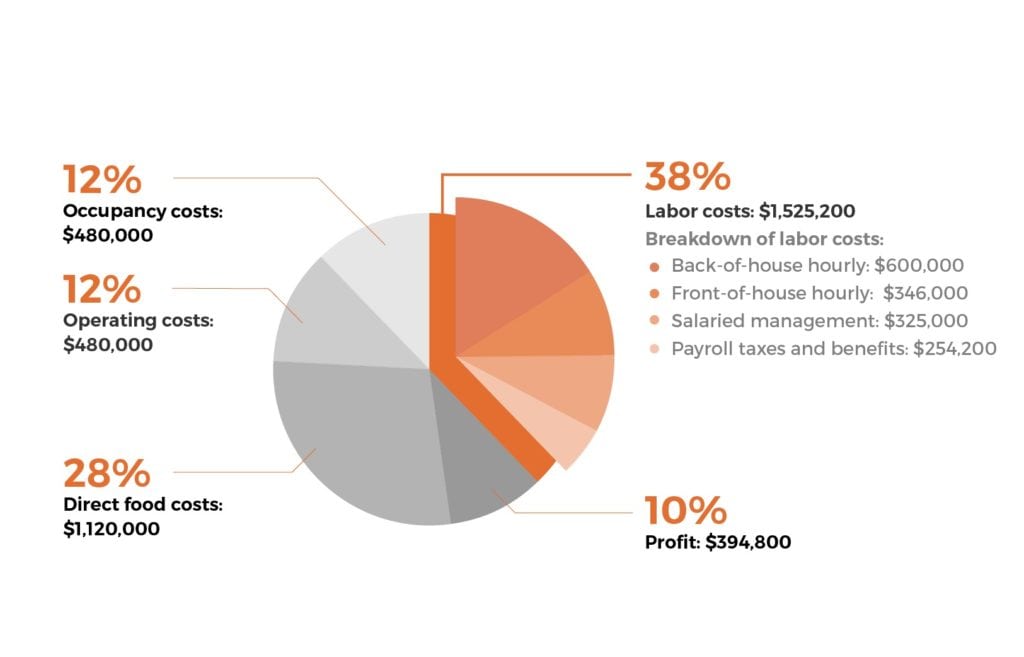
In this model, direct food costs account for all the ingredients that go into each item on the menu. Occupancy costs include rent, utilities, and related building insurance costs. Operational costs include everything else that’s visible in the restaurant, from dishes and paper goods to equipment and repair costs, linen services, and paying for the exterminator.
Labor costs include around 25 front-of-house employees working 32 hours per week (calculated at $8.65 per hour, although that can range depending on employee status), around 20 back-of-house employees working 40 hours per week (calculated at $15 an hour even though the minimum wage is $13 an hour, in order to account for the range of wages between dishwashers and line cooks), five salaried employees (the head chef, sous chef, general manager, and two floor managers), and associated payroll taxes, healthcare costs, and employee insurance.
With this budget, the restaurant is generating annual profits of $394,800, or about 10 percent of total sales. In the second chart, the tip credit is removed, meaning the restaurant must pay employees the full, state-mandated minimum wage, and all other calculations stay the same.
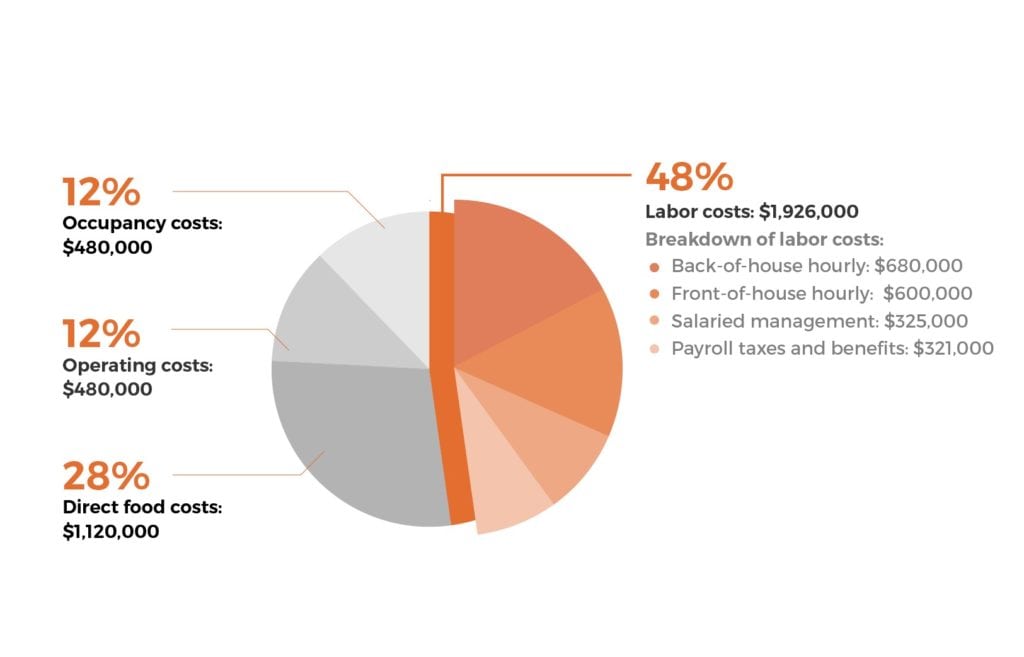
In the new model, labor costs have increased by just over $400,000. Each front-of-house employee went from $8.65 an hour to $15 an hour (New York City’s minimum wage as of December 2018) and the back-of-house average wage went from $15 an hour to $17 an hour. Payroll taxes and insurance costs were adjusted accordingly. The restaurant went from annual profits of $394,800 to operating at no profit, but an annual loss of $6,000.
In order to keep that 10 percent profit margin, the restaurant would need to generate $560,000 in extra sales.
The expectation to find an extra half million dollars to squeeze out of the budget is what’s leaving operators shocked over the potential elimination. If the answer is to simply increase volume, that’d be roughly an extra 30 covers per night, in a climate where owners are already trying to squeeze extra seats into every available space in the restaurant.
When asked about the possibility of increasing table turn times and finding more seat space on the floor to generate more sales, de Rochefort simply shrugged and said, “What the h*ll do you think we’re trying to do?”
Where Will the Revenue Come From?
The most straightforward action is to raise menu prices. In the operational scenario above, menu prices would have to go up at least 14 percent in order to generate enough extra revenue, assuming all other elements remained equal. A $13 burger becomes a $15 burger; a $25 seafood entree turns into a $28.50 dish.
When it comes to raising menu prices, some restaurants are more able than others. When Danny Meyer famously moved away from tipping (which required eliminating the tip credit from most of Union Square Hospitality’s restaurant budgets), the move came with a 21 percent hike in menu prices. Meyer has been able to weather that increase — there’s been no restaurant closures (in fact, a few restaurant openings), and there’s been no rollback of the “Hospitality Included” plan (although several of Union Square Hospitality Group’s restaurants still aren’t on the new system and do collect tips). Wages rose among the back-of-house staff and dipped in the front-of-house, leading 30 to 40 percent of USHG’s veteran front-of-house staffers to decamp from the group’s restaurants.
For others, it’s a bleaker landscape. At Sylvia’s in Harlem, Taniedra McFadden, the director of operations, says that the restaurant is considering eliminating breakfast, turning a secondary dining room into another bar space, and ramping up events programming in Sylvia’s catering space.
“We have a lot of neighborhood people who come here, and they want a really good meal but they don’t want to spend an arm and a leg for it,” McFadden told Skift Table. “So to leave with one person spending $50 on a meal just does not seem realistic.”
These calculations also don’t include rising yearly costs in every other area of the business. As the general minimum wage keeps climbing, for example, vendors will charge more for their products in order to offset their own labor cost increases. Rent continues to rise as well. At a recent hearing where restaurateurs testified in support of the right to add surcharges to checks in New York City, Keith Treyball, the president of E2 Hospitality, said that rent had “tripled” on the group’s flagship restaurant in Manhattan over the past three years. It’s a financial strain that comes on top of yearly minimum wage hikes, increased healthcare costs, and higher direct food costs.
“It has sort of become this death by a thousand cuts situation,” says Marc Glosserman, the founder of Hill Country Barbecue.
“At mom-and-pop restaurants, where every penny counts, they’re not going to be able to absorb these costs,” Jason Kaplan, CEO of restaurant consulting firm JK Consulting, told Skift Table. “If you’re having situations where raising your prices by one or two dollars stop people from coming to your restaurant, imagine what’s happening when you have to raise the prices by four, five, or six dollars. That’s huge.”
What do tipped employees want to happen?
Tipped employees are arguing on every side of the issue.
In D.C., residents voted to eliminate the tip credit on June 19. Leading up to the vote, there was a contentious fight among industry employees on whether or not to support the credit. Servers in some establishments would slip fliers in with the bill at the end of the meal telling diners to vote in favor of keeping the credit.
On the other side, servers have spoken out about how a tipping environment fosters sexual harassment and discriminatory practices. There have been plenty of reports published on how working for tips opens the door to harassment of all kinds, and a 2008 study from Cornell University found that tipping is often discriminatory, and black servers are consistently tipped less than white servers.
Restaurateurs have said that they would be happy to support the tip credit elimination if their tipped staff were asking for it. “This is a particular initiative that our service teams didn’t want,” Kimberly Grant, CEO of Jose Andrés’ ThinkFoodGroup, told Skift Table. “We’re a small enough company that we can talk to our team through various means and we feel pretty confident that that represents the sentiment of the many.”
George Constantinou, who co-owns Miti Miti and Bogota Latin Bistro in Brooklyn, has worked with Restaurant Opportunities Center United (the group leading the charge to eliminate the credit state by state) on past labor initiatives but didn’t come out in favor of this move since he doesn’t believe that the elimination holds any benefit for him or his staff.
“In the past when there’s been a push for change the employees have always been on the side of, ‘Yes, of course we want the minimum wage to go up because we’ll make more money,'” Constantinou explained. “But now, on this issue, I ask my servers all the time and they’re like, ‘No, I don’t want to get rid of that and jeopardize my future earnings.'”
Financially speaking, the most lucrative outcome for servers (and all other tipped front-of-house employees) would be to eliminate the credit and continue to make the same amount of tips. In New York City, if the credit were eliminated, servers would move to a base hourly wage of $15 plus theoretically averaging a 20 percent tip on each check, which could increase in proportion with menu price hikes. In practice, many restaurateurs feel that patrons will tip less on higher average checks, knowing that waitstaff is making the general minimum wage.
Some States Operate Just Fine Without the Tip Credit, Right?
Every restaurant in California, Washington, Minnesota, Alaska, Oregon, Nevada, and Montana has to pay every employee the same base minimum wage.
California restaurants generated over $80 billion in estimated sales in 2017, according to the National Restaurant Association. The restaurants employed nearly 1.8 million people in 2018, and that number is projected to grow by 10 percent over the next 10 years. The state’s restaurant industry is by far the largest contributor to the national restaurant economy, and it hasn’t allowed employers to take a tip credit since 1972.
However, at the time that California’s tip credit was eliminated, the state-mandated minimum wage was $1.65 an hour. The gap between the general minimum wage and the tipped minimum wage was counted in cents, not dollars.
Gwyneth Borden, the executive director of the Golden Gate Restaurant Association in San Francisco, told Skift Table that a direct comparison between California and states that are just now considering eliminating the credit doesn’t necessarily work when considering tipping behavior, either, because diners in California aren’t necessarily aware that tipped employees are already making the general minimum wage.
In areas like D.C., which just voted to eliminate the credit, residents were made very aware of the tip credit in the weeks leading up to the vote. Joshua Chaisson, a bartender in Portland, Maine, where the tip credit was eliminated in 2016 and then reinstated less than a year later, detailed in a Restaurant Workers of America meeting in New York City how customers would flat out ask if they still had to tip after the legislation passed, now that they knew the service staff was making the general minimum wage. Chaisson now heads up efforts in other states to fight the elimination of the tip credit.
On the financial side, Skift Research analyzed publicly available data from the Small Business Administration tracking restaurant loans and found that California matched national averages when it came to the rate of restaurants defaulting on their loans on an annual basis. Maine’s rate of default, however, spiked above both California’s rate and the national average in 2016.
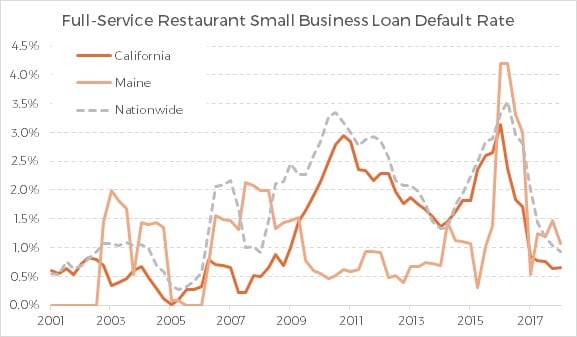
From an operational perspective, the Bay Area’s restaurants are working on thinner margins due to higher labor costs. Borden hasn’t seen restaurants moving to a tip-free model at a markedly higher rate, but restaurants are leaning more heavily on fast casual models, where diners are more involved in the ordering process and restaurants can employ less front-of-house workers.
Salar Sheik, the founder of California-based restaurant consultancy Savory Hospitality, said that the number-one reason restaurants call him for help is because labor costs are too high. In order to combat that, restaurants are rethinking everything from the way food is prepped (buying high-quality packaged food that is already prepared instead of paying someone to prep ingredients), to restructuring their menu, to considering technology that will automate parts of service.
“Labor was always number one and two on the list, but now it’s everyone’s number one priority,” Sheik said. “It’s trickling down to readjusting your layout, your concept and how you approach daily business.”
What About Coffee Shops or Counter Service Restaurants With Tip Jars?
According to the Department of Labor, tipped employees are defined as those that make more than $30 per month in tips. So, if a coffee shop or counter service restaurant employs workers that are collecting more than $30 per month in tips, those workers are eligible to be on a tipped wage. It’s not necessarily the full tipped wage (baristas are probably not pulling in the same amount of tips as a server on a weekly basis) but operators can make use of a partial tip credit if they choose.
Generally speaking, anytime there’s a line for tips on the receipt or a point-of-sale system prompts diners to leave a tip — even if it’s at a coffee shop — the person working behind the counter might work on a tipped wage. The chances are higher if it’s at an independent operator, where the tip credit is even more impactful to that restaurant’s bottom line.
So… Why Are Celebrities Involved?
It obviously helps to amplify the message on the side of eliminating the credit. Restaurant Opportunities Center United, the main group pushing to get the tip credit elimination in front of legislators across the U.S., rallied the support of sixteen celebrities, including Sarah Jessica Parker, Reese Witherspoon, and Natalie Portman, to publicly come out in favor of eliminating the tip credit via a letter sent to New York’s Department of Labor this past spring. Amy Poehler also brought Saru Jayaraman, the president of ROC United, to the Golden Globes in January and they both talked about eliminating the tip credit on the red carpet.
When the celebrity-signed letter was first published, Restaurant Workers of America, a group of industry employees who are in full support of keeping the tip credit, shot back a letter that said, essentially, “thanks but no thanks” to celebrities outside of the industry speaking up on the issue. They amassed over 500 signatures to support the letter.
What’s Expected to Happen?
Unlike Washington D.C.’s recent decision, New York residents don’t get a chance to vote — it’s up to the governor to decide. New York’s Department of Labor set up seven hearings across the state from April to June to provide an opportunity for voices to be heard on every side of the issue. The hearings were held in Syracuse, Buffalo, Watertown, Albany, New York City, and Long Island. New York City was broken up into two separate hearings to accommodate tipped workers in the hospitality industry and tipped workers in non-hospitality industries (like nail salon and car wash employees) who will also be affected by the decision.
The last hearing wrapped in New York City on June 27, and written testimonies had to be submitted to the state Department of Labor by July 1.
Now? New York waits. The director of communications for the Department of Labor told Skift Table that due to the magnitude of testimonies that were submitted both at the hearings and written in, it will probably be months before the governor will submit an official recommendation on whether or not the tip credit should stay.
No matter what the outcome, the restaurant industry will keep pushing forward.
“Is there room for successful restaurants? Absolutely,” says Stephen Zagor, the former dean of the Institute of Culinary Education’s school of business and management studies and an adjunct assistant professor of food business entrepreneurship at New York University and Columbia University. “The panacea — if there is one — is that people will really understand how to run this business. It’s never been easy, but now it’s even more challenging.”

